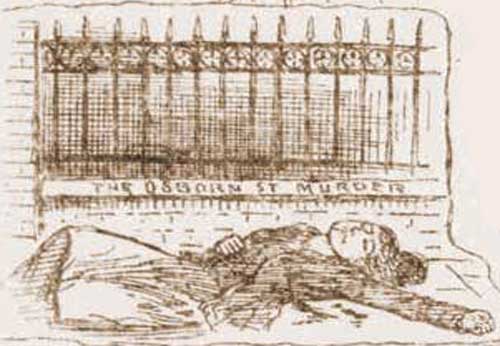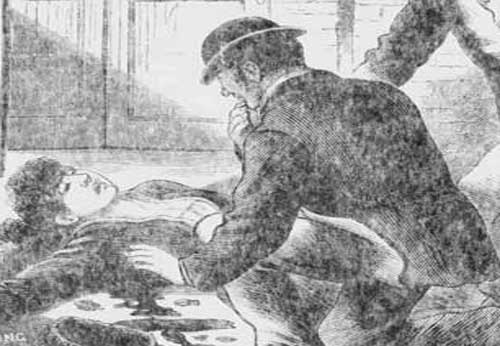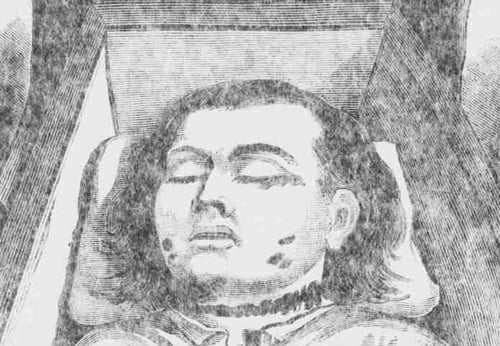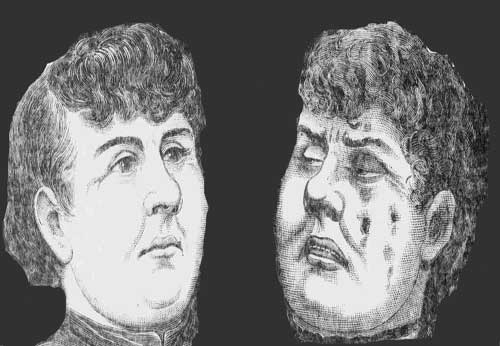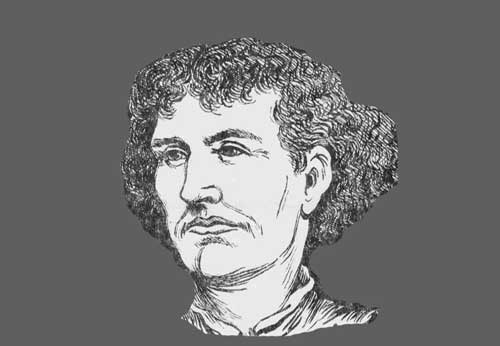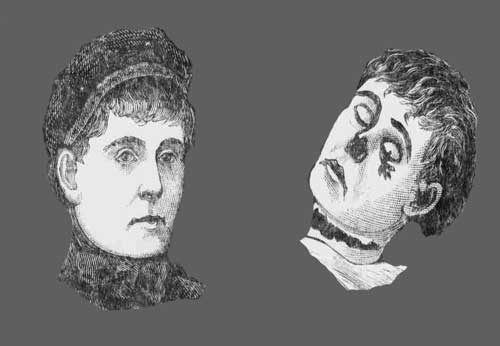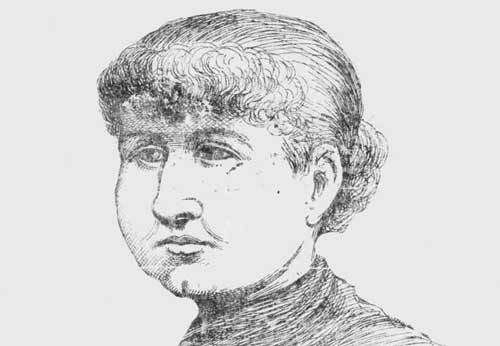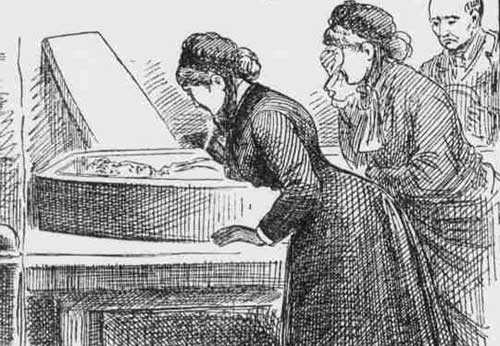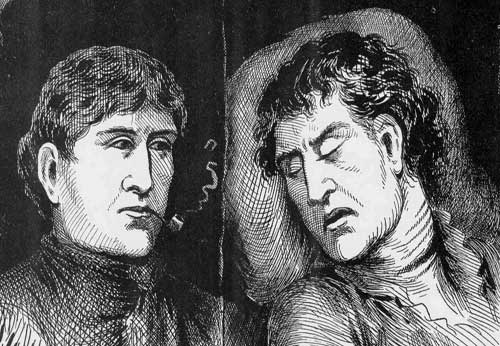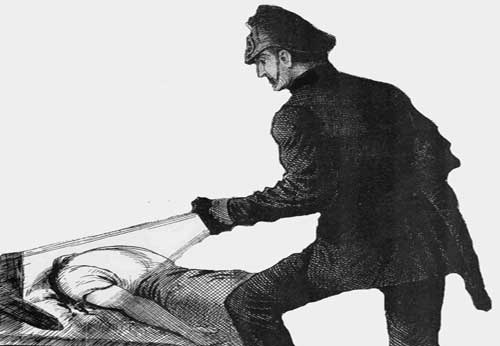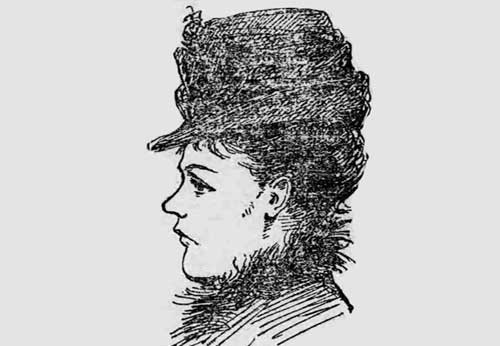- In the aftermath of the murder of Mary Nichols, which took place on 31st August, 1888, press coverage of the Whitechapel murders began to increase.
- The newspaper struggled to convey the full horror of what had occurred to their readers.
- Some of the doctors who examined her body were of the opinion that her injuries were the work of the same perpetrator who had carried out the Jack the Ripper atrocities in the autumn of 1888.
- Others thought that her injuries were not severe enough to have been carried out by the same hand..
- Site Author and Publisher Richard Jones
- Richard Jones
THE MARY NICHOLS NEWSPAPER ARCHIVE
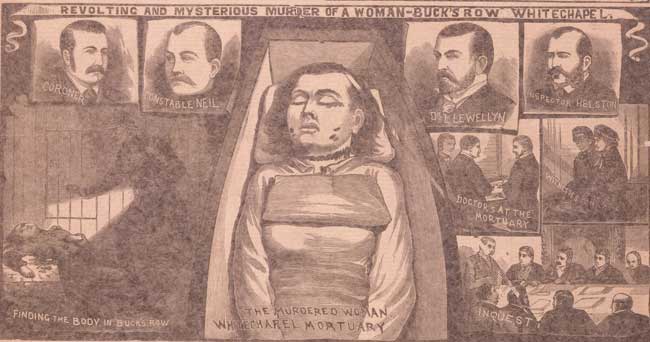
THE MURDER OF MARY NICHOLS - PRESS COVERAGE
The body of Mary Anne "Polly" Nichols was discovered in Buck's Row, Whitechapel, at around 3.40am on the morning of August 31st 1888.
Coming within a few weeks of the murder of Martha Tabram - not to mention the fact that Mary Nichols body was found just a short distance away from where both Emma Smith and Martha Tabram had been murdered - caused the press to begin to speculate on the fact that something very untoward was occurring in Whitechapel.
As a result they began bringing more lurid details of the crimes to their readers, and it is noticeable that, in early September 1888, press newspaper coverage of the Whitechapel Murders began to increase dramatically.
WHITECHAPEL'S BLACK RECORD
ANOTHER HORRIBLE MURDERSOURCE: THE SUNDERLAND ECHO
DATE: FRIDAY 31ST AUGUST 1888The Central News says:- Scarcely have the horror and sensation caused by the discovery of the murdered woman in Whitechapel some short time ago had time to abate, when another victim has been discovered in the same district.
The affair up to the present is enveloped in considerable mystery, and the police have as yet no evidence by which to trace the perpetrators of the deed.
The facts are that as Constable Neil was walking down Buck's-row, Thomas-street, Whitechapel, at about a quarter to four O'clock this morning, he discovered a woman between 35 and 40 years of age with her throat cut from ear to ear, the instrument with which the deed was done having traced the throat from left to right.
The woman was quite dead.
The wound was about two inches wide, and blood was flowing profusely. In fact, she was discovered to be lying in a pool of blood.
The body was immediately conveyed to the Whitechapel mortuary, when it was found that besides the wound in the throat, the lower part of the abdomen was completely ripped open, with the bowels protruding.
The wound extends nearly to her breast, and must have been effected with a large knife.
The hands are bruised and bear evidence of having engaged in a severe struggle. Some of the front teeth have been knocked out, and the face is bruised and discoloured.
In Whitechapel naturally the greatest excitement prevails and several persons in the neighbourhood state that an affray took place early in the morning, and they think that during this the murder was committed.
The woman murdered in Whitechapel has not yet been identified. She was wearing workhouse clothes, and it is supposed that she came from Lambeth.
A night watchman was in the street where the crime was committed. He heard no screams and saw no signs of the scuffle.
The body was quite warm when brought to the mortuary at half-past four this morning.
Another telegram says:-The brutality of the murder is beyond conception or description. Not only was the unfortunate woman's throat cut in two gashes with a sharp instrument, but the knife was stabbed into the lower part of the abdomen, and savagely drawn upwards twice, one cut cutting the left groin and hip, and the other slitting the abdomen as high as the breast bone.
This is the third brutal murder of the kind in the locality, and the police believe the perpetrator must be a ferocious maniac.
HORRIBLE MURDER IN EAST LONDON
WHITECHAPEL MYTSERYSOURCE: THE PALL MALL GAZETTE
DATE: FRIDAY 31ST AUGUST 1888Scarcely has the horror and sensation caused by the discovery of the murdered woman in Whitechapel some short time ago had time to abate, when another discovery is made, which, for the brutality exercised on the victim, is even more shocking, and will no doubt create as great a sensation in the vicinity as its predecessor.
The affair up to the present is enveloped in complete mystery, and the police have as yet no evidence to trace the perpetrators of the horrible deed.
The facts are that as Constable John Neil was walking down Bucks-row, Thomas-street, Whitechapel, about a quarter to four o'clock this morning, he discovered a woman between thirty-five and forty years of age lying at the side of the street with her throat cut right open from ear to ear, the instrument with which the deed was done tracing the throat from left to right.
The wound was an inch wide, and blood was flowing profusely.
She was immediately conveyed to the Whitechapel Mortuary, when it was found that besides the wound in the throat the lower part of the abdomen was completely ripped open, with the bowels protruding.
The wound extends nearly to her breast and must have been effected with a large knife.
As the corpse lies in the mortuary it presents a ghastly sight.
The victim seems to be between thirty-five and forty years of age, and measures five feet two inches in height. The hair is dark - features small. The hands are bruised, and bear evidence of having been engaged in a severe struggle. There is the impression of a ring having been worn on one of deceased's fingers, but there is nothing to show that it had been wrenched from her in a struggle. Some of the front teeth have also been knocked out, and the face is bruised on both cheeks and very much discoloured.
Deceased wore a rough brown ulster with large buttons in front, a brown dress and a petticoat which bears the name of the Lambeth Workhouse. The clothes are torn and cut up in several places, bearing evidence of the ferocity with which the murder was committed.
A night watchman was in the street where the crime was committed, but he heard no screams and saw no signs of the scuffle. The body was quite warm when taken to the mortuary at half-past four this morning.
BRUTAL MURDER IN WHITECHAPEL
SOURCE: THE DAILY NEWS
DATE: SATURDAY 1ST SEPTEMBER 1888A murder of the most brutal kind was committed in the neighbourhood of Whitechapel in the early hours of yesterday morning, but by whom and with what motive is at present a complete mystery.
At a quarter to four o'clock Police constable Neill, 97J when in Buck's-row, Whitechapel, came upon the body of a woman lying on a part of the footway, and on stooping to raise her up, in the belief that she was intoxicated, he discovered that her throat was cut almost from ear to ear.
Assistance was procured, a messenger being sent at once to the station and for a doctor.
Dr. Llewellyn, of Whitechapel-road, whose surgery is not more than 300 yards from the spot where the woman lay, was aroused, and proceeded at once to the scene.
He hastily inspected the body where it lay and pronounced the woman dead.
The police ambulance from the Bethnal-green station having arrived, the body was removed there.
A further examination showed the horrible nature of the crime, for the lower part of the woman's body was found to have been horribly mutilated by three or four deep gashes. Any one of the wounds was sufficient to came death.
After the body was removed to the mortuary of the parish in Old Montague-street, Whitechapel, steps were taken to secure, if possible, identification, but at first with little prospect of success.
The clothing on the body was of a common description. It was discovered that the skirt of one petticoat and the band of another article bore the stencil stamp of Lambeth Workhouse. The only articles in the pockets were a comb and a piece of looking glass. The latter led the police to conclude that the murdered woman was an inhabitant of one of the numerous lodging-homes in the neighbourhood.
As the news of the murder spread first one woman and then another come forward to view the body, and at length it was found that a woman answering the description of the deceased had lodged in a common lodging houses in Thrawl-street, Spitalfields.
Women from that place were fetched, and they identified the deceased as "Polly" who had shared a room with three other women in the place on the usual terms of such houses - nightly payment of 4d. each, each woman having a separate bed.
She had frequented the house for about three weeks past. When she presented herself for her lodging on Thursday night she was turned away because she had not the money.
She was then the worse for liquor.
A woman of the neighbourhood saw her later, she told the police - even as late as 2.30 on Friday morning - in Whitechapel-road, opposite the Church, and at the corner of Osborn-street, and at a quarter to four she was found within 600 yards of the spot murdered.
At about half-past seven last evening a woman named Mary Anne Monk, at present an inmate of Lambeth Workhouse, was taken to the mortuary, and identified the body as that of Mary Ann Nicholls.
She was with her in the Lambeth Workhouse in April, and May last. On the 12th of May Nicholls left the workhouse to take a situation as servant at Wandsworth-common. Her stay there, however, was short.
From that time she had been wandering about.
She was a married woman, but had been living apart from her husband for some years. Her age was 36, and she had been an inmate of Lambeth Workhouse off and on for the past seven years.
She was first admitted to the workhouse seven years ago, and from this point appears to have entered upon a downward career.
The matter is being investigated by Inspector Abberline of Scotland-yard and Inspector Helson. J Division.
The latter states that he walked carefully over the ground soon after 8 o'clock in the morning, and beyond the discolourations ordinarily found on pavements, there was no sign of stain. Viewing the soot where the body was found, however, it seems difficult to believe that the woman received her death wounds there. The body must have been nearly drained of blood, but that found in Buck's-row was small indeed.
The police have no theory with respect to the matter, except that a sort of "High Rip" gang exits in the neighbourhood which, "blackmailing" women who frequent the streets, takes vengeance on those who do not find money for them. They base that surmise on the fact that within twelve months two other women have been murdered in the district by almost similar means - one as recently us the 6th of August last - and left in the gutter of the street in the early hours of the morning.
The other theory is that the woman, whilst undressed, was murdered in a house near, her clothes being then huddled on the body, which was afterwards conveyed out to be deposited in the street. Colour is lent to this by the small quantity, comparatively, of blood found on the clothes, and by the fact that the clothes are not cut. If the woman was murdered on the spot where the body was found, it is almost impossible to believe she would not have aroused the neighbourhood by her screams, Buck's-row being a street tenanted all down one side by a respectable class of people superior to many of the surrounding streets, the other side having a blank wall bounding a warehouse.
Dr. Llewellyn yesterday made the following statement:-
"I was called to Buck's-row about five minutes to four this morning by Police-constable Thane, who said a woman had been murdered.
I went to the place at once, and found deceased lying on the ground in front of the stable yard door. She was lying on her back with her legs out straight, as though she had been laid down. Police-constable Neil told me that the body had not been touched. The throat was cut from ear to ear, and the woman was quite dead.
On feeling the extremities of the body I found that they were still warm, showing that death had not long ensued.
A crowd was now gathering, and as it was undesirable to make a further examination in the street, I ordered the removal of the body to the mortuary, telling the police to send for me again if anything of importance transpired. There was a very small pool of blood in the pathway which had trickled away from the wound the throat, not more than would fill two wine glasses, or half a pint at the outside. This fact, and the way in which the deceased was lying, made me think at the time that it was probable that the murder was committed elsewhere, and the body conveyed to Bunk's-row.
At the time I had no idea of the fearful abdominal wounds which bad been inflicted upon the body.
At half-past five I was summoned to the mortuary by the police, and was astonished at finding the other wounds. I have seen many horrible cases, but never such a brutal affair as this.
From the nature of the cuts on the throat it is probable that they were inflicted with the left hand. There is a mark at the point of the jaw on the right aide of deceased's face as though made by a person's thumb, and a similar bruise on the left side, as if the woman's head bad been pushed back and her throat then cut. There is a gash under the left ear reaching nearly to the centre of the throat, and another cut apparently starting from the right ear. The neck is severed back to the vertebrae, which is also slightly injured. The abdominal wounds are extraordinary for their length and the severity with which they have been inflicted. Deceased's clothes were loose, and the wounds could have: been inflicted while she was dressed."
The inquest will be held by Mr. Wynne E. Baxter, the coroner for the district, at the Working Lads' Institute, Whitechapel, at one o'clock today.
THE MURDER IN WHITECHAPEL
THEORY OF THE CRIMESOURCE: THE DAILY NEWS
DATE: MONDAY 3RD SEPTEMBER 1888Up to a late hour last evening the police had obtained no positive clue to the perpetrator of the latest of the three murders which have so recently taken place in Whitechapel.
The murder committed in the early hours of Friday morning of the woman now known as Mary Ann Nichols has so many points of similarity with the murders of the two other women in the same neighbourhood - one, Martha Turner as recently as the 7th August, and the other less than twelve months previously - that the police admit their belief that the three crimes are the work of one individual.
All three women were of the same class, and each of them was so poor that robbery could have formed no motive for the crime.
The three murders were committed within distance, of 200 yards of each other.
In the earliest case a thrust into the body sufficed to cause the victim's death, in the second some 39 stabs were inflicted before Martha Turner was left to die on the doorsteps of the -model dwellings in George-yard, and in the latest case the woman was so violently attacked that she was very nearly disemboweled.
These facts have led the police almost abandon the idea of a gang being abroad to wreak vengeance on women for not supplying them with money.
Detective-inspector Abberline, of the Criminal Investigation Department and Detective-inspector Helson J Division are both of the opinion that only one person, and that a man, had a hand in the latest murder.
It is understood that the investigation into the George Yard mystery is proceeding hand in hand with that of Buck's-row.
If any doubt existed as to the identity of the murdered woman after the evidence of her father at the inquest - a report of which will be found below - it was removed to the satisfaction of the police on Saturday night. The husband visited the mortuary, and on viewing the corpse, identified it as that of his wife, from-whom he had been separated eight years.
He stated that she was nearly 44 years of age, but it must be owned that she looked nearly ten years younger, as indeed the police at first described the body.
The husband, Who was greatly affected, exclaimed on recognising the body, "I forgive you, as you are, for what you have been to me."
He removed one element of doubt in the case - i.e. whether she had been assaulted and her teeth knocked out, as stated, prior to being murdered. The absence of the front teeth was, he said, of old standing.
Mr. William Nichols, who lives near Old Kent-road, is a journeyman printer.
Inspector Helson, at an interview yesterday evening, said that the report that blood stains were found leading from Brady-street to Buck's-row was not true. The place was examined by Sergeant Enright and himself on Friday morning and neither bloodstains nor wheel marks were found to indicate that the body had been deposited where found, the murder being committed elsewhere. Both himself and Inspector Abberline, indeed, had come to they conclusion that it was committed on the spot.
That conclusion was fortified by the post mortem examination made by Dr. Llewellyn. At first the small quantity of blood found on the spot suggested that the woman was murdered in a neighbouring house. Dr. Llewellyn, however, is understood to have satisfied himself that the great quantity of blood which must have followed the gashes in the abdomen flowed into the abdominal cavity, but he maintains his opinion that the first wounds were those in the throat, and they would have effectually prevented any screaming.
The blood from those wounds Inspector Helson considers was held by the dress and the ulster, and It is evident, from that view of the matter, that the woman was lying on her back when her throat was cut.
It is, moreover, considered unlikely that the woman could have entered a house, have been murdered, and have been removed to Buck's-row within a period of an hour and a quarter. The woman who last saw the deceased alive - and whose name is Nelly Holland - is a fellow lodger with the deceased in Thrawl-street, and is positive as to the time being 2.30.
Police-constable Neil, 79 J, who found the body, reports the time as 3.45. Buck's-row is a comparatively secluded place, having tenements on one side only. There is little doubt that the constable was watched out of the street on his previous round. He has been severely questioned as to his "working" of his "beat" on that night, and states that he was last on the spot where he found the body not more than half an hour previously - that is to say at 3.15. The "beat" is a very short one, and, quickly walked over, would not occupy more than twelve minutes. He neither heard a cry nor saw a soul. Moreover, there are three watchmen on duty at night close to the spot and neither one heard a cry to cause alarm.
It is not true, says Countable Neil, who is a man of nearly 20 years service, that he was called to the body by two men. He came upon it as he walked and flashing his lanthorn to examine it he was answered by the lights from two other constables at either end of the street. These officers had seen no man leaving the spot to attract attention and the mystery is most complete. Nevertheless, the utmost efforts are being used, a number of plain clothes men being out making enquiries in the neighbourhood, and Sergeants Wright and Godley have interviewed many persona who might, it was thought, assist in giving, a clue.
The inquest is to be resumed to-day, but must rather hamper the action of the police, whose whole time, is required to trace any information whilst the scent, if any, is still fresh.
The deceased, it in understood, will be buried to-morrow."
THE INQUEST
On Saturday afternoon Mr. Wynne Baxter, coroner for East Middlesex, opened the inquest at the Working Lads' Institute, Whitechapel.
Edward Walker, an old man, residing at 16 Maidwood street, Albany road, Camberwell, said that he was formerly a smith. To the best of his belief the body at the mortuary was that of his daughter, whom he had not seen for three years. He recognised it by the general appearance, the loss of some front teeth, and a small mark on the forehead, caused when the deceased was a child. She was 42 years old. About 22 years ago she was married to a man named William Nicholls, who was still alive. He was a printer's machinist. He and the deceased had been living apart for seven or eight years. The witness last heard of his daughter last Easter, when she wrote to him the following letter from a home in Wandsworth in which she had just before obtained a situation as domestic servant:-
"I just write to say you will be glad to know that I am settled in my new place, and going on all right up to now.
My people went out yesterday, and have not returned, so I am left in charge. It is a grand place inside, with trees and gardens back and front. All has been newly done up. They are teetotallers and religious, so I ought to get on. They are very nice people, and I have not too much to do. I hope you are all right and the boy has work. So goodbye for the present
Yours truly,
PollyAnswer soon, please, and let me know how you are."
He replied to this letter, but had not heard from his daughter since.
He last saw her alive in June, 1888. She was apparently respectable then, but he did not speak to her. It was at a funeral. He was not friendly with her. She lived with him three or four years ago, and after a few words she left him. He did not know what she did afterwards. She was not particularly sober, and that was why they did not agree. He did not think she was fast. He had no idea of such a thing. She did not stay out particularly late at night. The worst he had seen of her was her keeping company with females of a certain class.
After she wrote to him from Wandsworth he sent a kind letter back to her but did not see or hear anything of her until he was called to view the body.
He had kept her letter because it was his habit to keep letters. It was not the case that he turned her out of doors. She had no cause to be "like this." He had always had a home for her.
She had separated from her husband because he "turned nasty" over another man. Her husband left her, and took another woman to live with.
The deceased had had five children, of whom the eldest, a young man, was 21 years old, and the youngest 8. The eldest was living with the witness, and the other four children with their father.
He believed that three or four years ago the deceased lived with a man who kept a smith's shop in York street, Walworth.
He did not know that she had lived with any other man; but on one occasion the parish of Lambeth summoned her husband for her maintenance. His defence was that she was living with another man. She denied it, but the summons was dismissed.
Until he heard of the murder he did not know that she had left the situation at Wandsworth. Just before taking it she was in Lambeth Workhouse.
He knew of nothing likely to throw light on the inquiry. He was not aware that she had any enemies. She was always too good for that. Her only fault was being too good.
Police constable John Neil deposed that on Friday morning at a quarter to four o'clock he was going down Buck's row, Whitechapel, from Thomas street to Brady street. Not a soul was about. He was round there about half an hour previously, and met nobody then.
The first thing he saw was a figure lying on the footpath. It was dark, but there was a street lamp on the opposite side some distance away. The figure was lying alongside a gateway, of which the gate, nine or ten feet high, was locked. It led to some stables belonging to Mr. Brown.
From the gateway eastward the houses began, and westward there was a Board School. All the houses were occupied.
The deceased's left hand was touching the gate.
Directly he turned his lantern on the body, he noticed blood was oozing from the woman's throat. She was lying on her back with her hands beside the body, the eyes wide open, the legs a little apart, and the hands open.
Feeling her right arm he found it quite warm. Her bonnet was beside her on the ground.
Without disturbing the body he called a constable who was passing along Brady street. He came, and the witness said to him, "Here's a woman has cut her throat. Run at once for Dr. Llewellyn." He did so, and the witness seeing another constable pass along Baker's-row, sent him for the ambulance.
Dr. Llewellyn came in about ten minutes.
In the meantime the witness rang the bell at Essex Wharf on the opposite side of the street. A man appeared at a window, and, in answer to a question, said he had not heard any unusual noise.
Sergeant Kirby afterwards came and knocked at the door of New Cottage, adjoining the gateway. Mrs. Green answered from an upper window, and said that she had not heard any unusual noise.
When the doctor came he pronounced life extinct.
The deceased was then placed on the ambulance and taken to the mortuary.
There Inspector Spratling came to take a description of the body, which he found was disemboweled.
They found no money on the women; only a comb, a small piece of looking glass, and a white handkerchief, unmarked.
When the witness found the body, there was a pool of blood beneath the neck.
He had not heard any noise that night. On the contrary, the place was unusually quiet, and nothing had aroused his suspicion. It was quite possible for anybody to have escaped through Brady street into Whitechapel-road, or through a passage into Queen's buildings.
He never saw the deceased before finding her dead. A quarter of an hour previously he was in Whitechapel-road, where he saw some people apparently going to market, and some women.
Replying to jurymen, the witness added that he examined the place where he found the deceased, and saw no track of blood. It did not strike him that somebody might have brought the body in a trap, with the intention of throwing it on to the adjoining railway line. There was a slaughterhouse near, in Winthorpe-street, and two men who had been working there all night, and whom he knew well, came into Buck's-row while the body was being put on the ambulance. They made no observation. With the exception of a man who had passed down Buck's row while the doctor was present, they were the first of the general public to arrive. They had just finished work, and were on their way home. He had just seen them and another man at work in the slaughter-house when he passed it, about twenty minutes past three o'clock.
Dr. Llewellyn, 152 Whitechapel road, deposed that on Friday morning about four o'clock he was called up by a policeman with whom he went to Buck's-row.
He there found the deceased lying on her back with her throat deeply cut; there was very little blood on the ground. She had apparently been dead about half an hour. He was quite certain that the injury to her throat was not self inflicted. There was no mark of any struggle either on the body or near where it was found.
About half an hour afterwards he was sent for again by the police, and going to the mortuary to which the body had been carried, found most extensive injuries on the abdomen.
At ten o'clock that (Saturday) morning, in the presence of his assistant, he began a post mortem examination.
On the right side of the face was a recent and strongly marked bruise, which was scarcely perceptible when he first saw the body. It might have been caused either by a blow from a fist or by the pressure of the thumb. On the left side of the face was a circular bruise, which might have been produced in the same way. A small bruise was on the left side of the neck, and an abrasion on the right. All must have been done at the same time. There were two cuts in the throat, one four inches long and the other eight, and both reaching to the vertebrae, which had also been penetrated. The wounds must have been inflicted with a strong bladed knife, moderately sharp, and used with great violence. It appeared to have been held in the left hand of the person who had used it.
No blood at all was found on the front of the woman's clothes.
The body was fairly well nourished and there was no smell of alcohol in the stomach.
On the abdomen were some seven cuts and stabs, which the witness described in detail. Nearly all the blood had been drained out of the arteries and veins, and collected to a large extent in the loose tissues. The deceased's wound were sufficient to cause instantaneous death.
Questioned by jurymen, the witness said the deceased was a strong woman.
The murderer must have had some rough anatomical knowledge, for he seemed to have attacked all the vital parts. It was impossible to say whether the wounds were inflicted by a clasp knife or a butcher's knife, but the instrument must have been a strong one.
When he first saw the body life had not been out of it more than half an hour. The murder might have occupied four or five minutes. It could have been committed by one man so far as the wounds were concerned.
This being the whole of the evidence to be taken that day, Inspector Abberline asked for an adjournment of some length, as certain things were coming to the knowledge of the police, and they wished for time to make inquiries.
The coroner replied that he should like to hear on Monday the two butchers who had been referred to, as well as evidence as to the departure of the deceased from the situation at Wandsworth.
Inspector Abberline: The butchers have been summoned.
Inspector Helsby remarked that the deceased's departure from her situation at Wandsworth had to do with a case of larceny. The evidence for which the Coroner asked should be produced.
A juryman - Can we have the husband?
Inspector Abberline - Yes, sir.
The inquest was then adjourned till today (Monday)
Mr. Henry T. Tibbatts, 24 Artillery-lane, Bishopsgate street Without, writes us with reference to this murder:-
"I contend, as an East end man, having business premises within a stone's throw of Whitechapel Church, that our police protection is shamefully adequate, and that the scenes that hourly and daily are enacted in this locality are a disgrace to our vaunted progress.
I myself have witnessed street fights amounting almost to murder in the neighbourhood of Osborn street, Fashion street, &c., and never at any of these critical periods are the police to be found.
Only within the last few days has a most disgraceful scene been enacted close to my own gates in Spitalfields, but then as ever the police were conspicuous by their absence, and such things are of common occurrence.
It is quite time some one spoke out plainly. I have waited long enough, hoping that some of out representatives in the parish might take the matter up, but the time has arrived when I for one will no longer remain quiet.
I only hope that this may be the means, with your valuable assistance, of calling attention to an altogether extraordinary condition of affairs."

